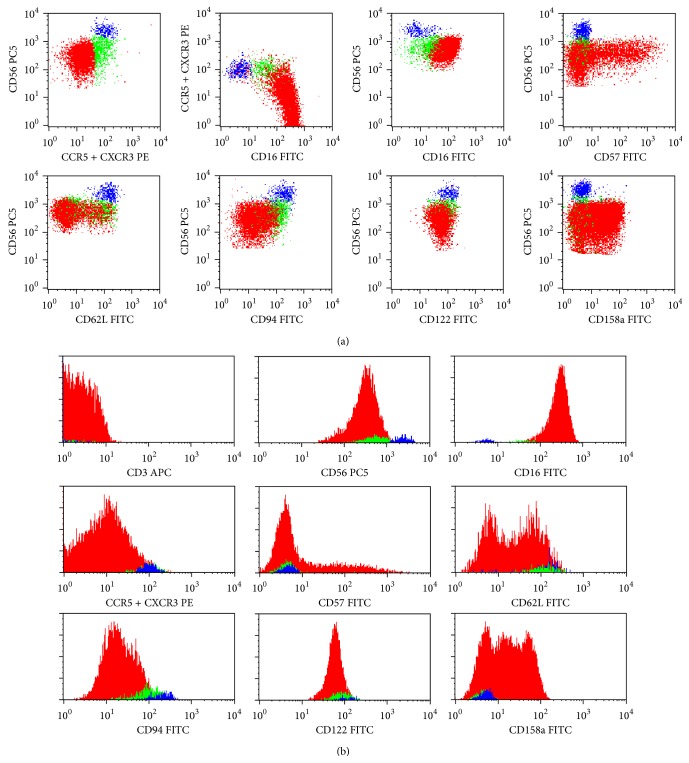Figure 2.
Representative dot plots (a) and histograms (b) illustrating the expression of the CD3, CD16, CD56, CD57, CD62L, CD94, CD122, and CD158a molecules on CD56+low CXCR3/CCR5− (red dots), CD56+int CXCR3/CCR5+ (green dots), and CD56+high CXCR3/CCR5+ (blue dots) NK-cells in normal peripheral blood (PB). In order to obtain the dot plots showed in this figure, PB cells were stained with APC-conjugated anti-CD3, PC5-conjugated anti-CD56, PE-conjugated anti-CXCR3 + PE-conjugated anti-CCR5, and FITC-conjugated monoclonal antibodies against CD16, CD57, CD62L, CD94, CD122, or CD158a molecules. Total CD56+ cells were gated using the strategy illustrated in Figure 1. Then, using the CD56/CCR5 + CXCR3 dot plot (first dot plot), three different CD56+ NK-cell populations were identified based on the levels of expression of CD56 and CXCR3/CCR5: CD56+low CCR5/CXCR3− (red dots), CD56+int CCR5/CXCR3+ (green dots), and CD56+high CCR5/CXCR3+ (blue dots). As it can be seen in the remaining dot plots and histograms, these NK-cell populations differ on the expression of several cell surface molecules. The percentage of cells staining positively for each molecule analyzed, as well as the mean fluorescence intensity of antigen expression and its coefficient of variation, was calculated after gating separately for each NK-cell population and is shown in Table 1 (data is not shown in the figure, for simplicity).

